A popular shade-loving perennial plant, hostas (Hosta spp.) come in multiple cultivars and some spectacular colors. If you love an eye-catching garden foliage plant, you can’t go wrong with planting some hostas. Once you have decided which hostas you will grow, it’s time to determine which plants would be best suited to grow alongside them as companions.
The best companion plants for hostas include bleeding hearts, astilbe, Japanese forest grass, hydrangea, azalea, Siberian bugloss, Japanese painted fern, coral bells, and impatiens. These plants have similar growing needs and will enhance your hosta garden with their appearance. Let’s take a closer look.
9 Great Companion Plants For Hostas
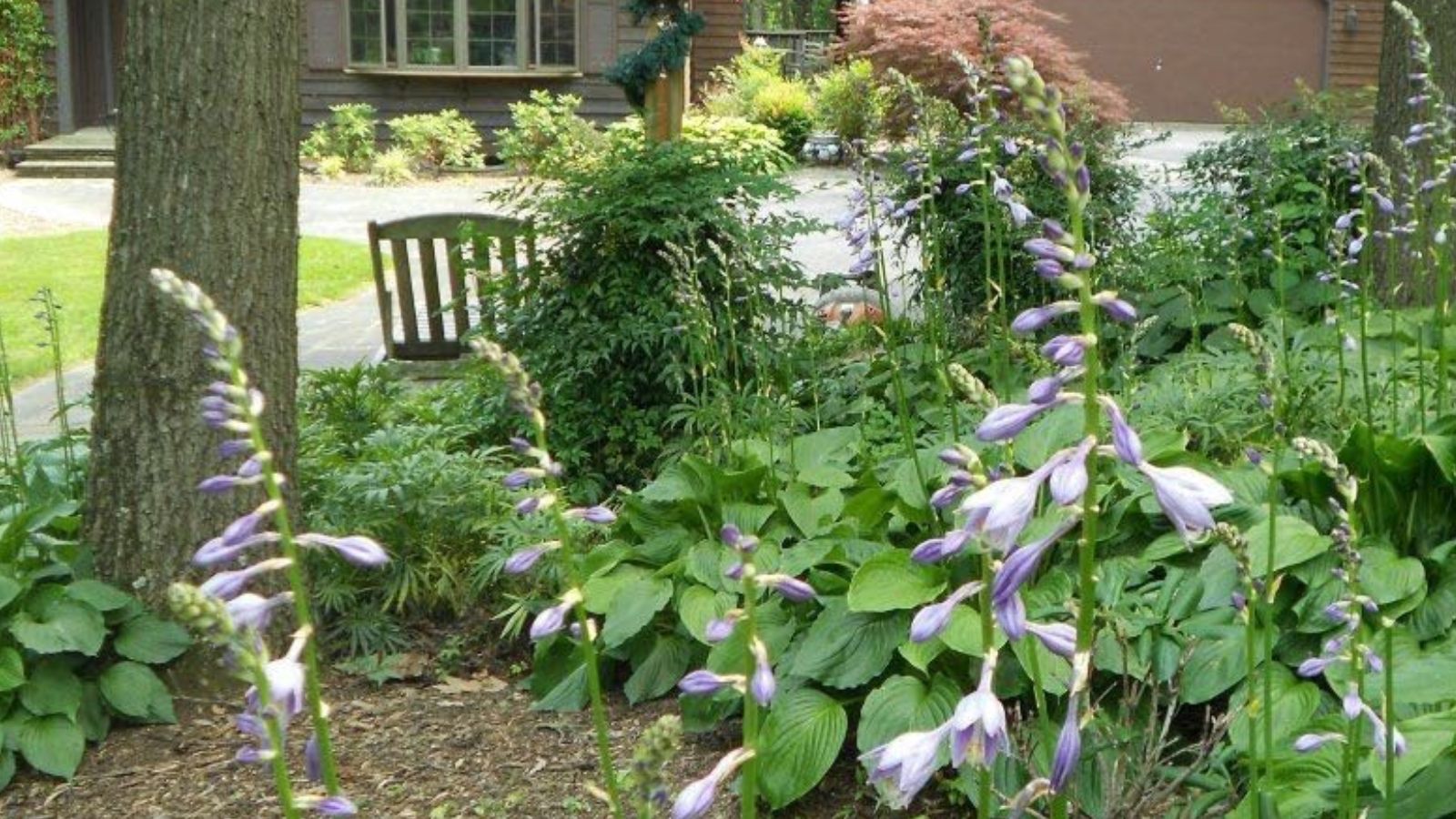
Image credit: Backyard Garden Lover.
Hostas are herbaceous perennial plants that thrive in full to partially shady conditions. They require well-drained, rich, and fertile soil and grow in USDA hardiness zones 3 – 9. Hostas are clump-forming plants that produce long stalks which extend up above their lovely foliage, with attractive flowers in pink, lavender, and white, depending on the hosta variety.
Hosta’s best feature is its foliage, which comes in different shades of gold, green, dusky blue, chartreuse, or beautifully variegated. There are endless options of plants from which you could choose companions for hosta plants.
1. Bleeding Hearts (Lamprocapnos spectabilis)
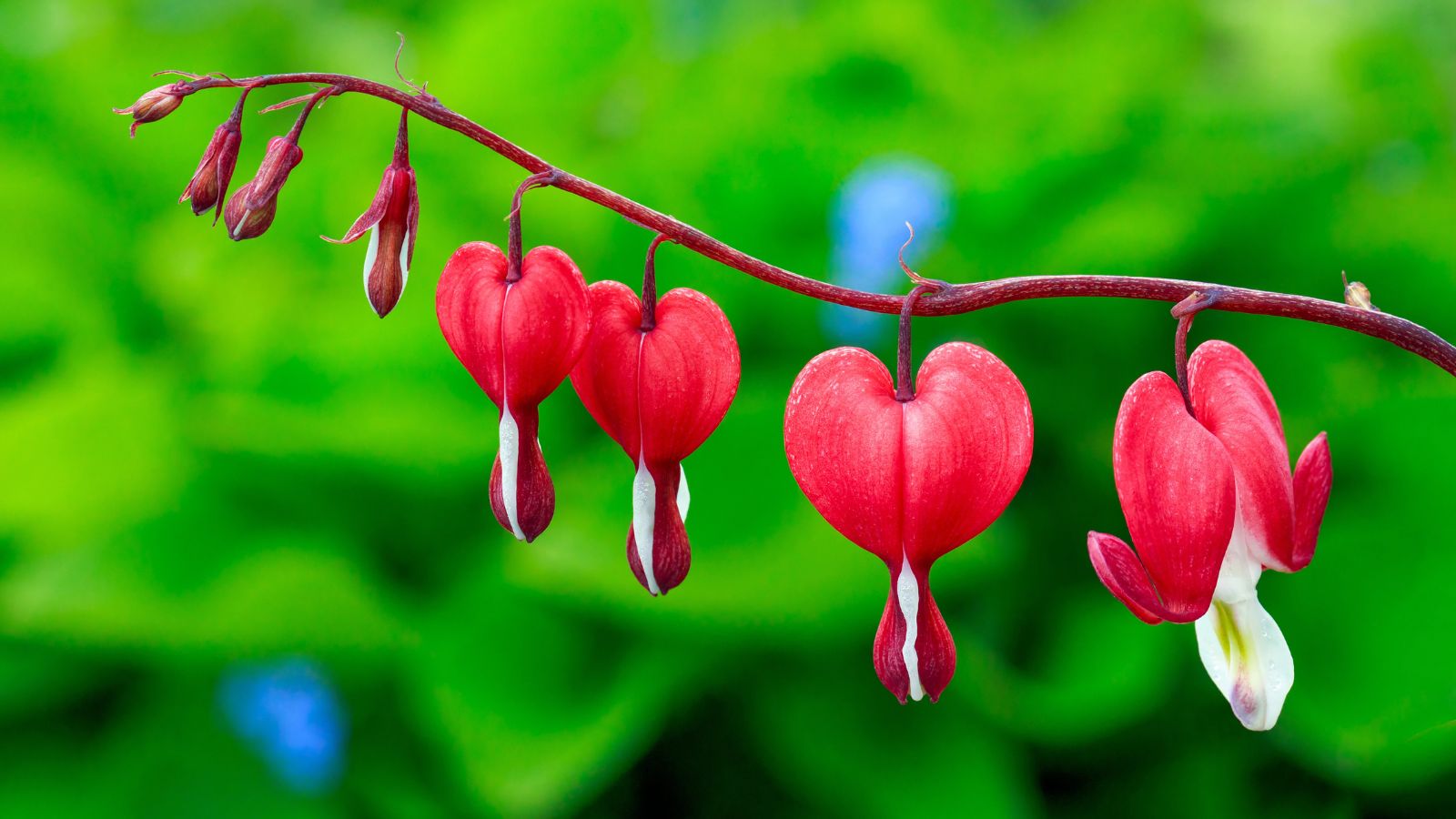
Image credit: Depositphotos.
Bleeding hearts are shade-loving plants that bloom in the spring. Some varieties, including the fringed-leaf kind, will bloom throughout the summer if grown in the right conditions. Bleeding heart plants prefer partial to full shade, moist and rich soil, and grow optimally in USDA hardiness zones 2 – 9.
The bleeding heart’s fine texture will complement your hosta’s bold texture. These two plants are shade-loving, and their growing preferences are similar, making them the perfect companion plants. Learn more about growing bleeding hearts.
2. Astilbe (Astilbe spp.)
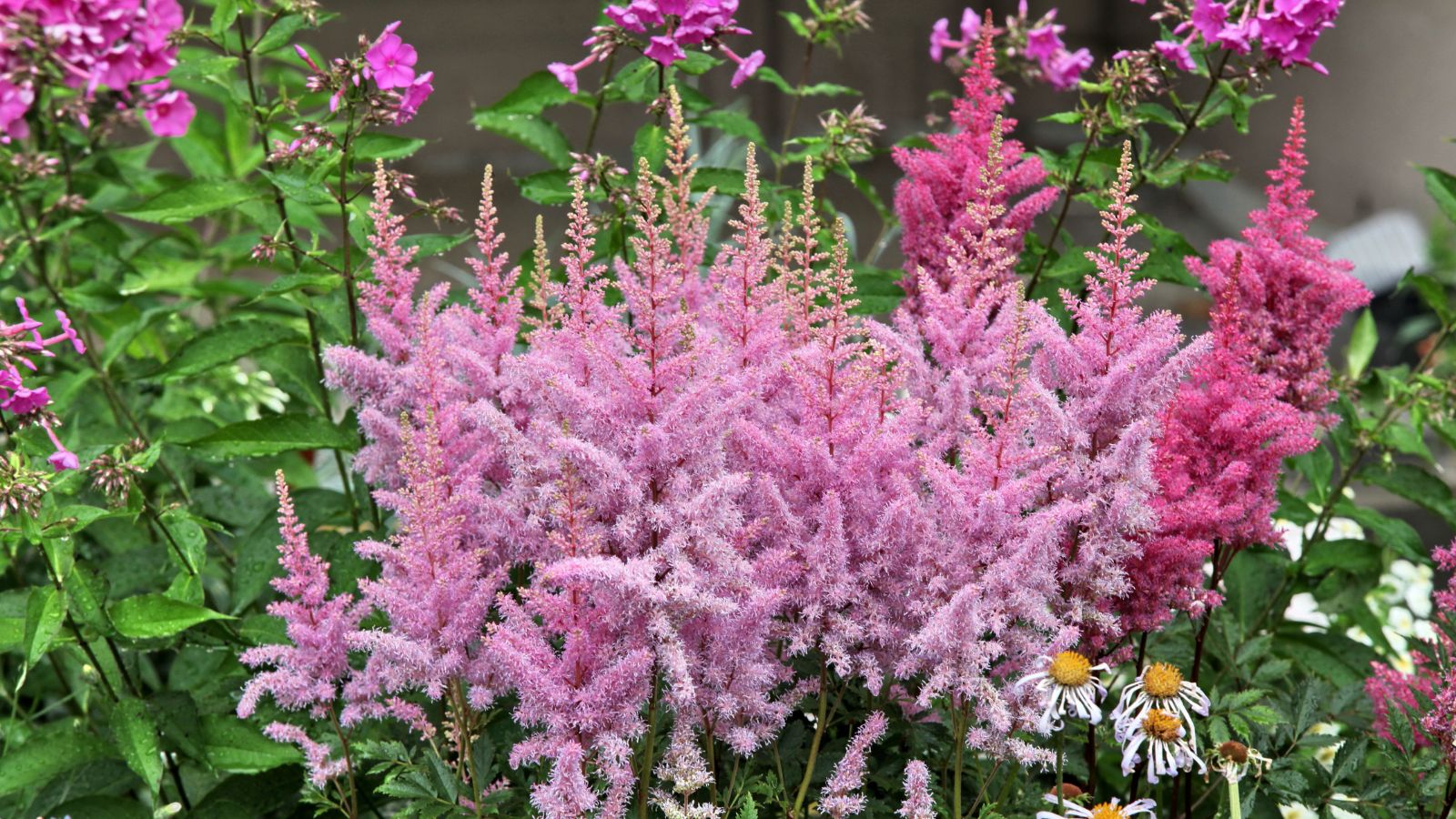
Image credit: YAY Images.
Astilbes are lovely perennial plants that are easy to grow, making them a popular choice for gardeners. They produce airy foliage and stiff, tall stalks that hold their plume-like flowers in various colors, including purple, pink, red, and white. These plants can happily survive in partial shade in moist loamy soils and grow optimally in USDA hardiness zones 3 – 8.
Astilbes are another excellent addition to any shade garden. The flowers these lovely plants produce are stunning when paired with hostas, especially when interspersed with dwarf hostas in front of them and larger hostas behind them.
3. Japanese Forest Grass (Hakonechloa macra)
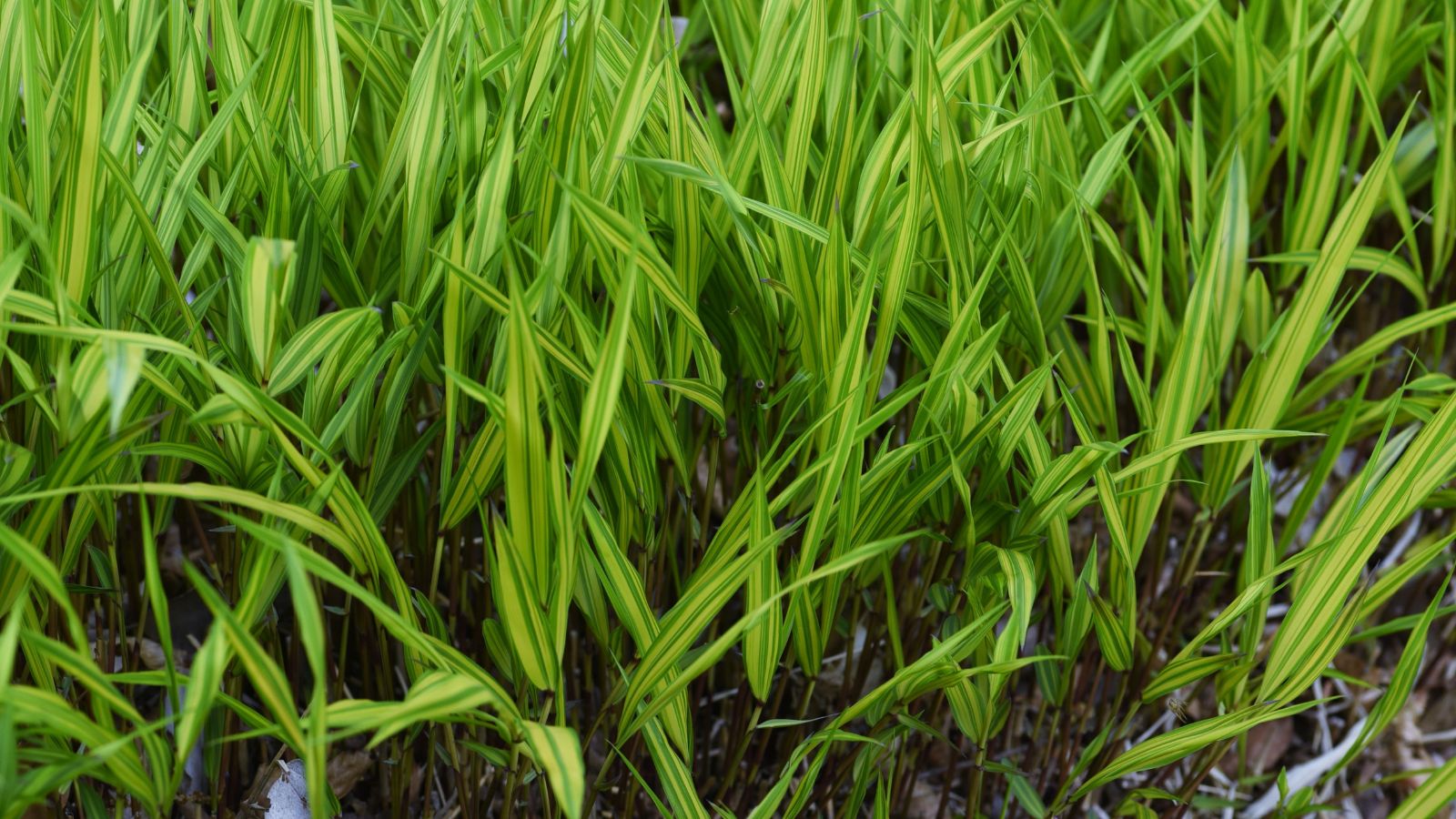
Image credit: Deposit Photos.
Japanese forest grass is a beautiful ornamental grass that is slow-growing and thrives in shady areas. Optimal growing conditions include partial sunlight and well-drained, moist soil, in USDA hardiness zones 4 – 9.
It produces lance-shaped, arching green or variegated leaves that cascade out of a mounting clump. The leaves grow to approximately 10 inches long, and the plant gets 24 inches wide and 18 inches tall.
This shade-tolerant ornamental grass adds visual layers and depth to any garden. Its angular foliage adds texture to the leaves of most nearby plants, but especially the leaves of a hosta. The color difference between the yellow tones of the ornamental grass and the blue and green leaves on the hosta makes for a beautiful sight.
4. Hydrangea (Hydrangea spp.)
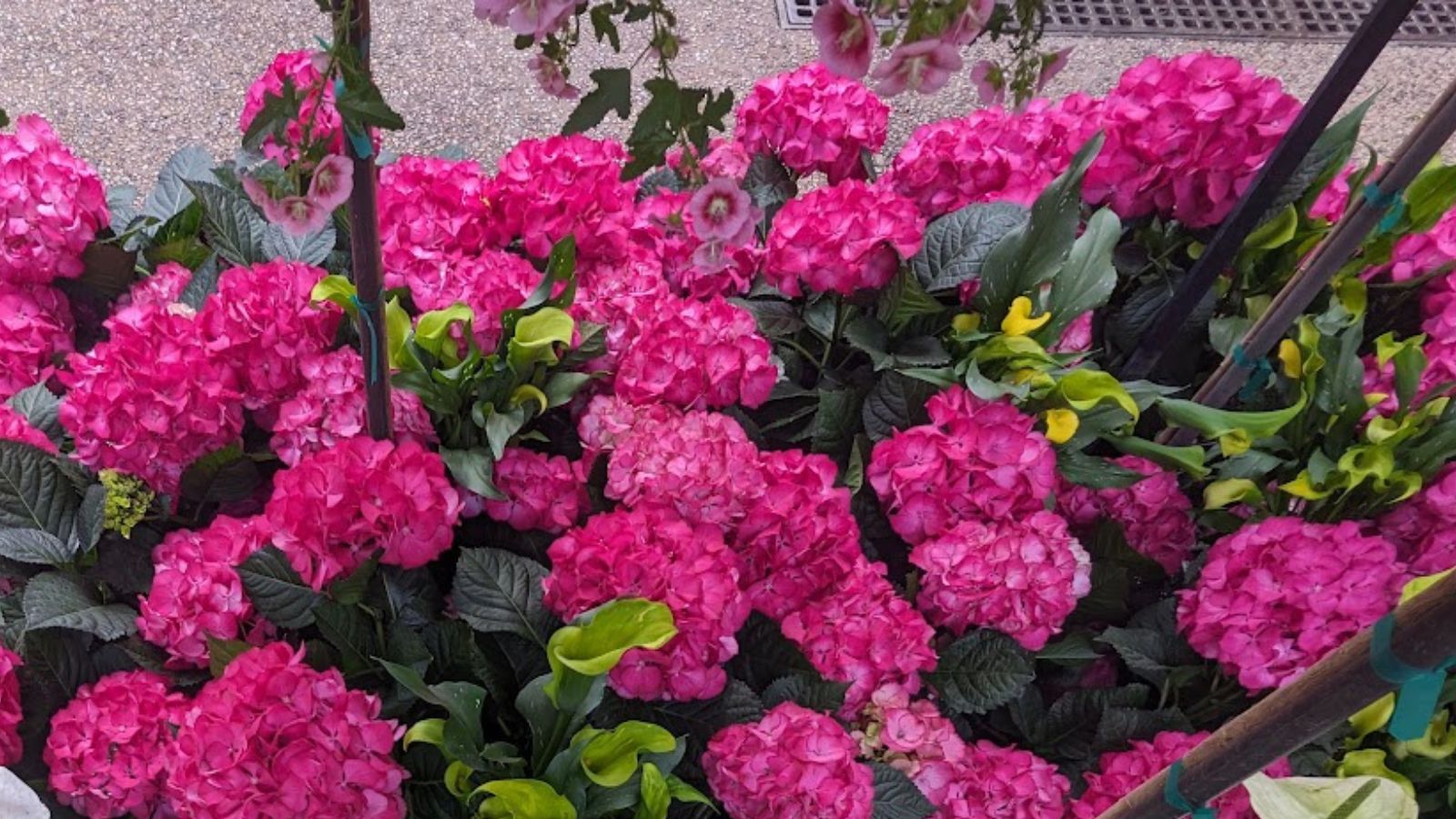
Image credit: Backyard Garden Lover.
There are many hydrangea varieties from which to choose. These plants are quick growers and, depending on the type, produce flowers in various colors, including pale green, white, red, maroon, and shades of blue and pink. These plants like full to partial sunlight, any soil will do for them, but they prefer USDA hardiness zones 5 – 9.
Hydrangeas are the perfect companion plants for hostas, as their beautiful flowers provide the perfect texture and color contrast to the foliage of the hosta. Their easy-to-care-for nature and ability to survive in most soil types make them attractive additions to any garden.
Love hydrangeas? Here’s more information about growing and caring for hydrangeas:
5. Azalea (Rhododendron spp.)
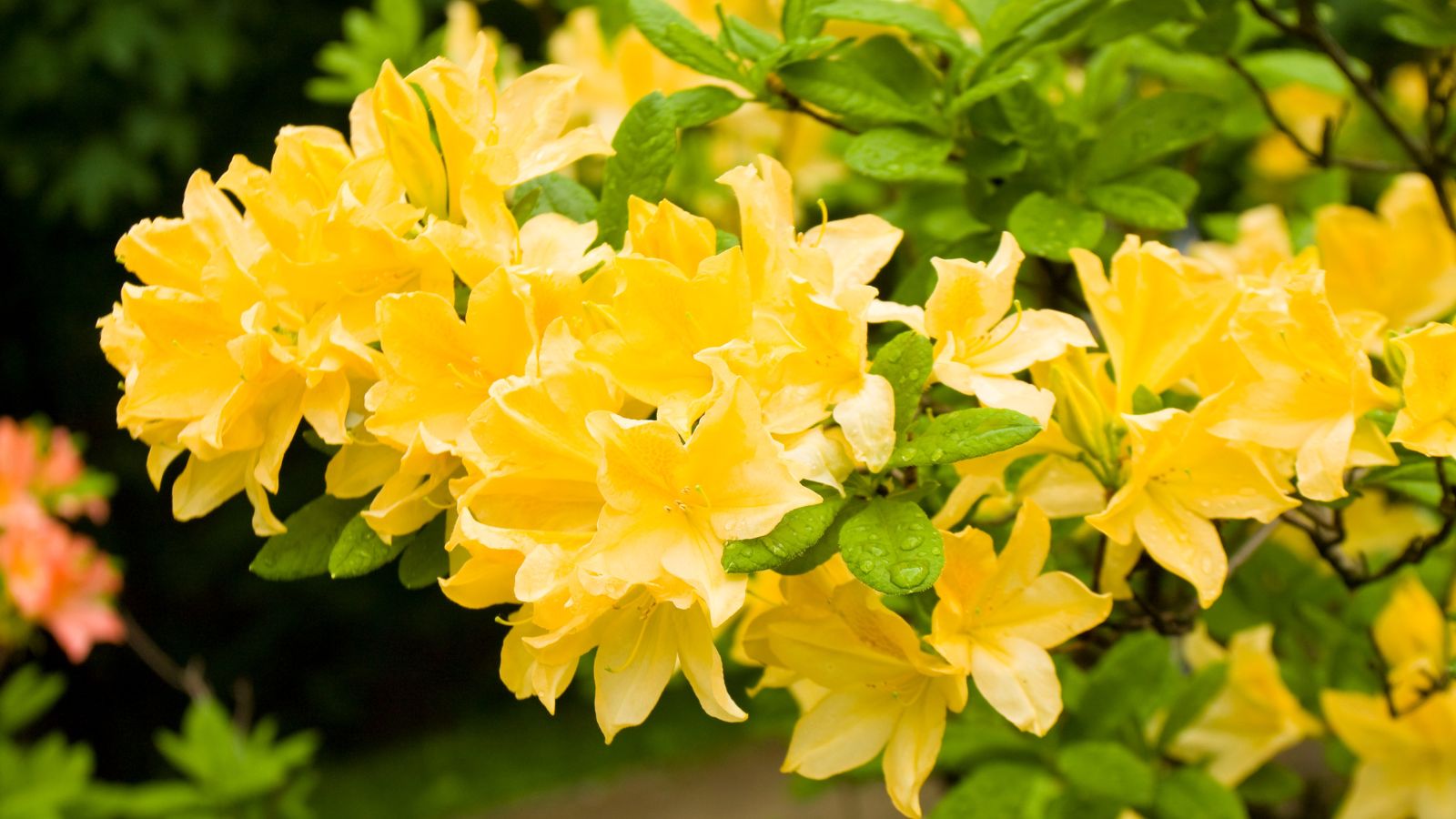
Image credit: Depositphotos.
Azalea produces elliptical leaves and lovely bell-shaped or tubular flowers, depending on the variety. The flower color range is spectacular in shades of pale pink to white, red, and purple. These small shrubs can happily survive in partially shady conditions with well-drained, light soils in USDA hardiness zones 3 – 9.
Azaleas share similar growing preferences with hostas, making them perfect candidates for companion growing. The small stature of the azalea makes it an excellent choice for smaller gardens, with its lovely, colorful flowers adding extra color to your garden when your hostas are not in bloom.
6. Siberian Bugloss (Brunnera macrophylla)

Image credit: Backyard Garden Lover.
Siberian bugloss is a beautiful perennial that produces a lovely ground cover out of its heart-shaped, dark-green leaves. The pretty blue flowers with white centers rise on stems above the plant in the spring and last approximately four weeks.
The optimum growing conditions for this plant include complete to partial sunlight, but it will also happily survive in full shade. They prefer well-drained, moist soils and thrive in USDA hardiness zones 3 – 8.
Siberian bugloss is a popular choice for a shade garden as a ground cover, and as it shares similar growing preferences with hostas, the two make lovely companion plants. The leaves of the hosta, coupled with the beautiful, tiny blue flowers of the Siberian bugloss, provide your garden with a wonderful texture and color contrast.
7. Japanese Painted Fern (Athyrium niponicum)

Image Credit: YayImages
Japanese painted fern is one of the most beautiful varieties of ferns, sporting silvery, triangular leaves that have a shade of gray-green, with purplish midribs. These variegated ferns are slow-growing perennials that prefer partial to full shade, well-drained, moist soils, and thrive in USDA hardiness zones 3 – 8.
The lacy leaves on this fern contrast with the larger leaves on a hosta. The color tones also add texture and feel to a tropical garden setting. The two plants share similar growing requirements, making them excellent choices for companion plants.
8. Coral Bells (Heuchera spp.)
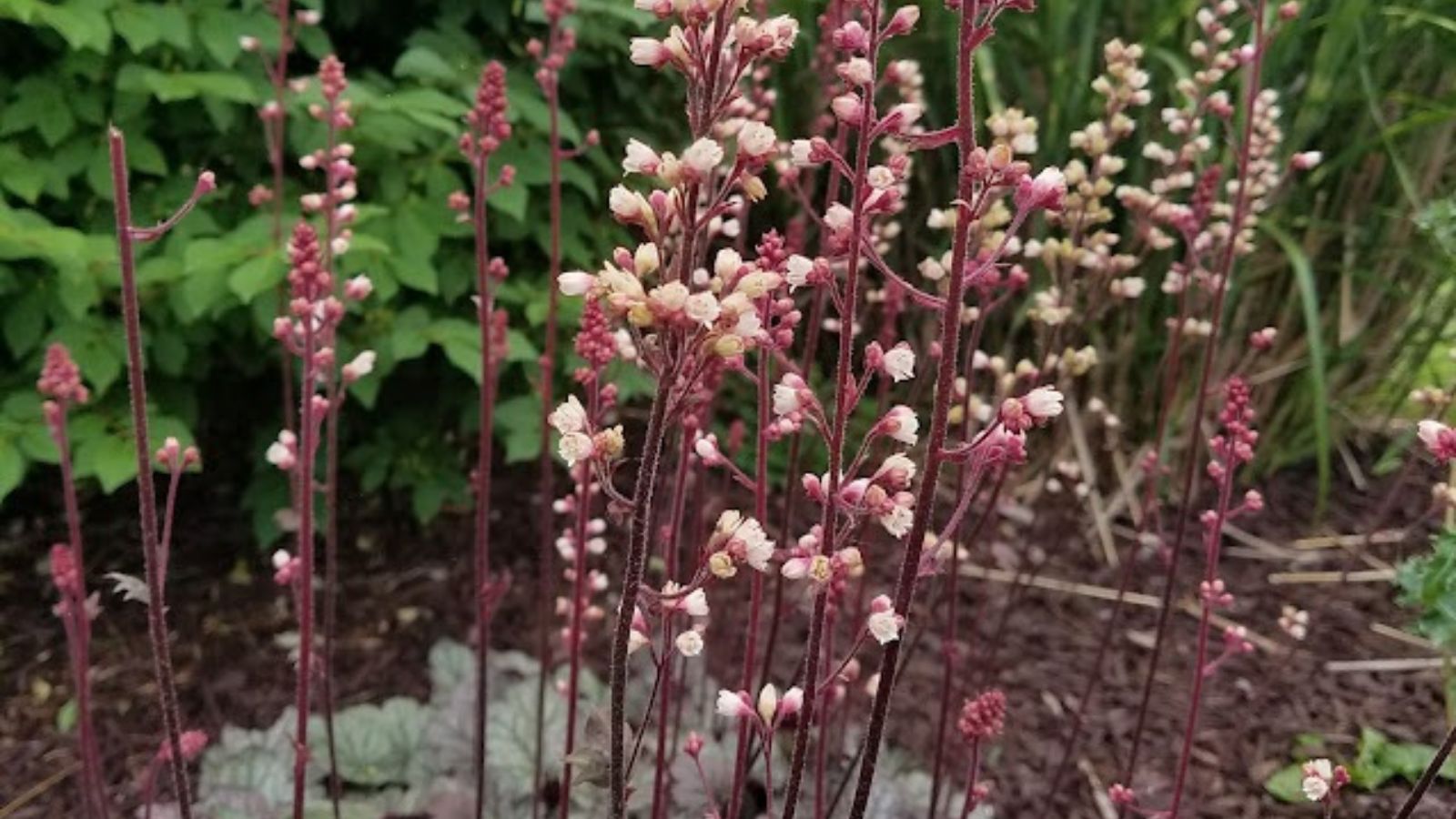
Image credit: Backyard Garden Lover.
You can choose from multiple varieties of coral bells. Their leaves are hairy, lobed, full to semi-evergreen, and come in an array of spectacular colors, including gold, lime green, rose, purple, and more.
Their flowers are rich in nectar and are great for attracting hummingbirds, butterflies, and bees into your garden. This plant grows optimally in full to partial sunlight, with well-draining, moist, and rich soils, in USDA hardiness zones 4a – 9a.
Coral bells and hostas share similar growing conditions preferences. The small flowers the coral bell produces are stunning and help make your shade garden more spectacular. The leaves of the coral bell will also provide a lovely contrast to your hosta in texture and color.
9. Impatiens (Impatiens spp.)
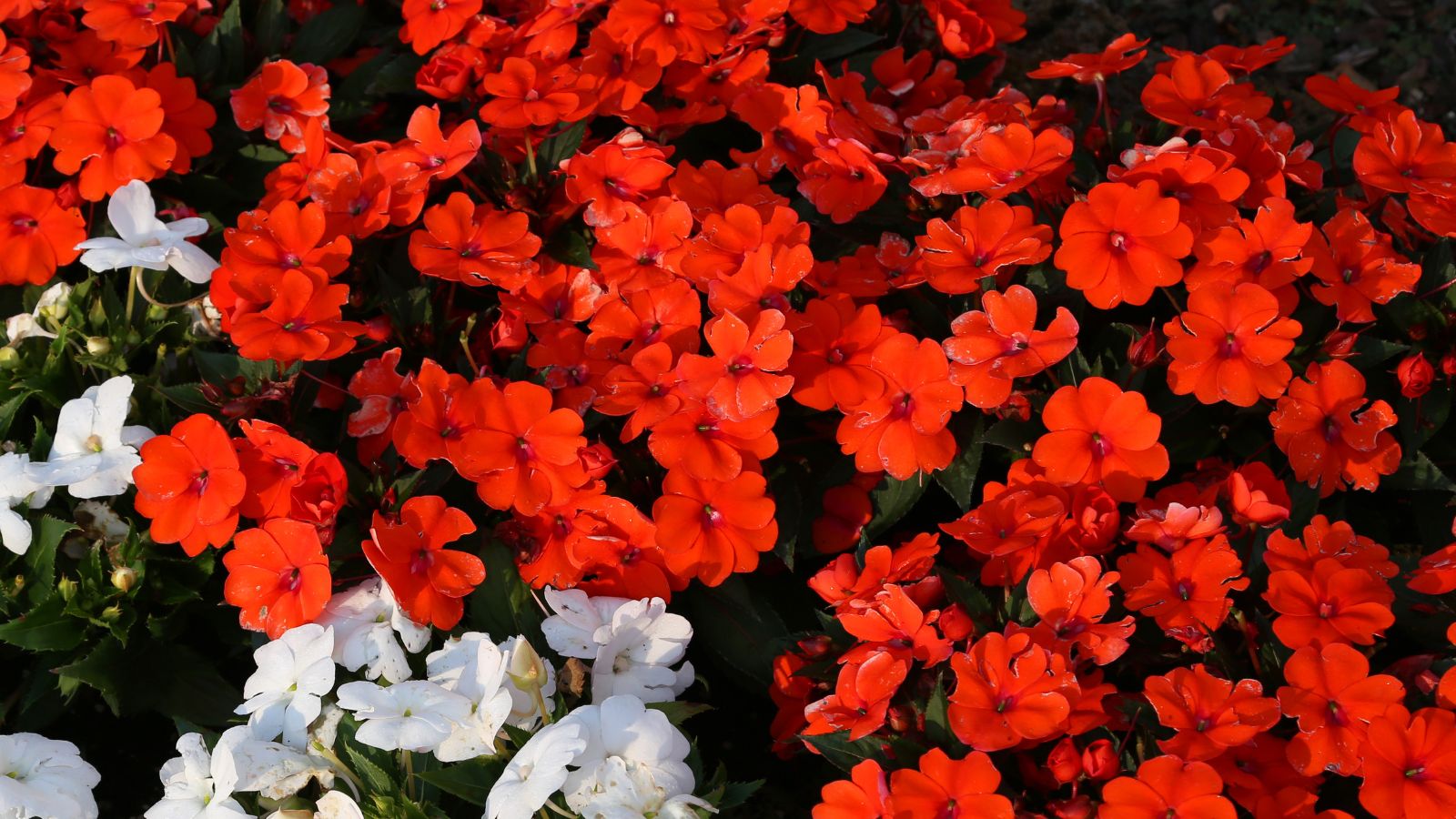
Image credit: Depositphotos.
Impatiens are popular garden additions loved for their brightly colored flowers and love of shady areas. In most places, you can grow these plants as annuals, but in USDA hardiness zones 10 – 11, you can grow them as perennials.
They produce flowers in vibrant colors and pastels, including pink, white, red, coral, violet, yellow, and purple. These plants prefer to grow in rich, well-draining soils in full to partial shade.
Interspersing impatiens between your hostas adds stunning color arrays during the spring months. The great thing is that once the flowers are no longer in bloom, the leaves of your hostas will cover up the dying foliage of the impatiens.
More Shade-Loving Plants to Pair With Hostas
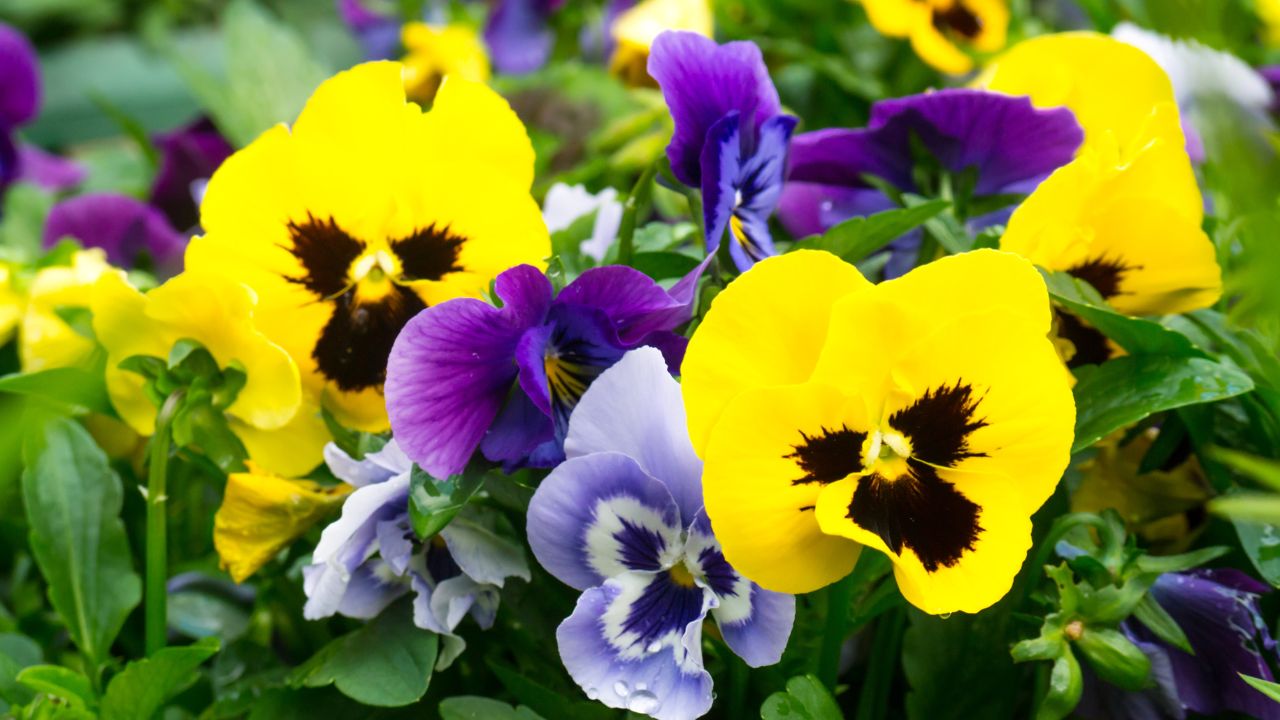
Image Credit: Shutterstock.
The above are just a few of the many plants that combine beautifully with the gorgeous hosta foliage. But there are many more plants for a shady garden spot bordered by hostas. Here are just a few more ideas:
- begonias
- periwinkle
- sweet woodruff
- alliums
- clematis
- grape hyacinth
- alyssum
- pansies and/or Johnny jump up
- coleus
- tulips
- chives
- and more
Hostas are an excellent choice for any shade garden with their spectacular foliage and range of colors. When planning your hosta shade garden, choose companion plants that share similar growing requirements and will contrast nicely with your hostas.

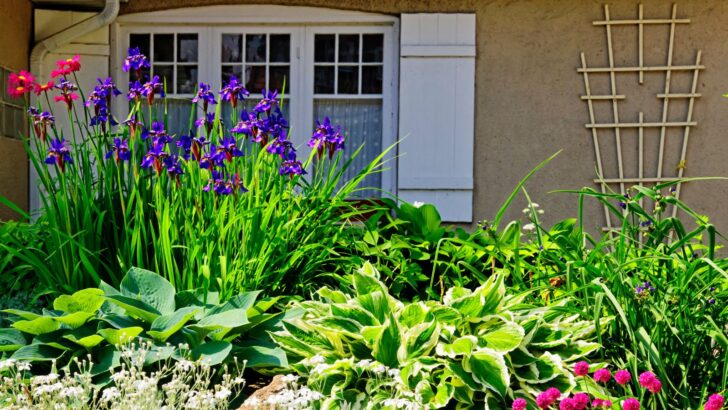

Companion Planting Guide (Including 7 Benefits Of Polyculture)
Friday 30th of June 2023
[…] Companion plants for hostas […]